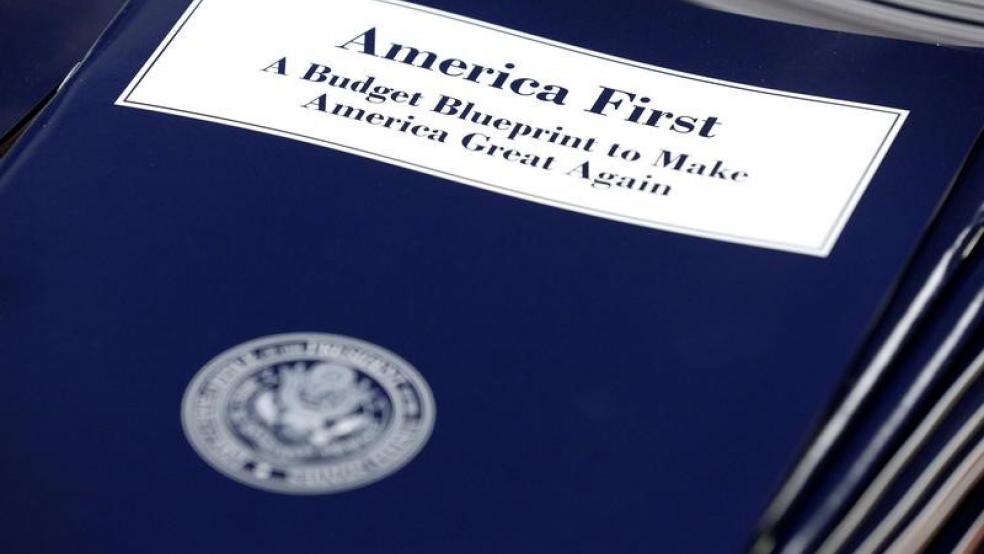When the White House released its sketch of a 2018 budget proposal earlier this month, outlining major cuts to things like medical research and Community Development Block Grants, the reaction was swift and brutal. Lawmakers on both sides of the aisle promised that the huge reductions in popular programs would never become law.
The administration doesn’t appear to have learned a lot from the experience, though. The Associated Press reports the White House has been floating a plan on Capitol Hill for the 2017 spending bill that needs to be completed before April 29 in order to avoid a government shutdown. In it are $18 billion in cuts targeted in large part...at medical research and Community Development Block Grants.
Related: Why Another Government Shutdown Is Suddenly in the Cards
Under the plan, which is described as a list of options and not necessarily official White House policy, the National Institutes of Health would lose $1.8 billion, and the CDBG program, which states use to help fund a wide range of programs including Meals on Wheel and after school programs for at-risk children, would lose $3 billion.
In an interesting twist, the administration is apparently also considering a $500 million cut in the Transportation Investment Generating Economic Recovery (TIGER) grant program, which focuses on infrastructure programs. Trump has repeatedly pledged to ramp up infrastructure spending in the US.
The cuts are part of a broader effort to get Congress to acquiesce to Trump’s request for an immediate infusion of $30 billion into the Pentagon as a down payment on what he has promised will be one of the biggest surges in military spending in the nation’s history. He also wants a first installment of cash for the signature element of his immigration crackdown -- a massive wall on the US-Mexico border.
In negotiations over how to handle the April 28th expiration of the continuing resolution that is allowing the federal government to continue spending money, the young Trump White House is entering territory that has proved hazardous for far more experienced administrations. With the exception of George W. Bush, every president going back to Ronald Reagan has experienced at least one government shutdown over spending disagreements, and some have faced several.
Related: Trump Wants to Overhaul an Understaffed Government Desperate for Leadership
It’s a tough assignment for an administration packed with political novices who have already stumbled badly in their first attempt to manage a major piece of legislation: Trump and company were forced to watch helplessly as the American Health Care Act, meant to repeal and replace the Affordable Care Act, died in the Republican-controlled House of Representatives.
Now, they face a potential battle with many of the same members of Congress who helped derail the AHCA, members of the House Freedom Caucus. Representing the rightmost wing of the GOP in the House, they wield considerable influence within the party because there are enough of them to deprive House Speaker Paul Ryan of a majority if they decline to back him on the House floor.
In the past, the Freedom Caucus has used must-pass legislation, like government funding bills or debt limit increases, to push specific agenda items that may or may not be shared by the broader Congress, such defunding the ACA or Planned Parenthood.
The Freedom Caucus chairman, Mark Meadows, said over the weekend that the group doesn’t expect problems with funding the government.
Related: Chair of Freedom Caucus Open to Deficit-Expanding Tax Cuts
But experts, like budget wars veteran Stan Collender, executive vice president at Qorvis MSLGROUP, note that history suggests that many of Meadows’ members will be reluctant to pass up an opportunity to press for one of their priorities. The problem is that the rest of the party knows that if they cave into the Freedom Caucus demands, the bill will be filibustered by Senate Democrats.
In the end, there is a strong possibility that the Trump administration is going to need support not just from Republicans but also from a solid number of Democrats to overcome conservative resistance in the House.
That means even a temporary spending resolution that slashes medical research and CDBGs is going nowhere fast, even with the GOP in control of both houses of Congress.





